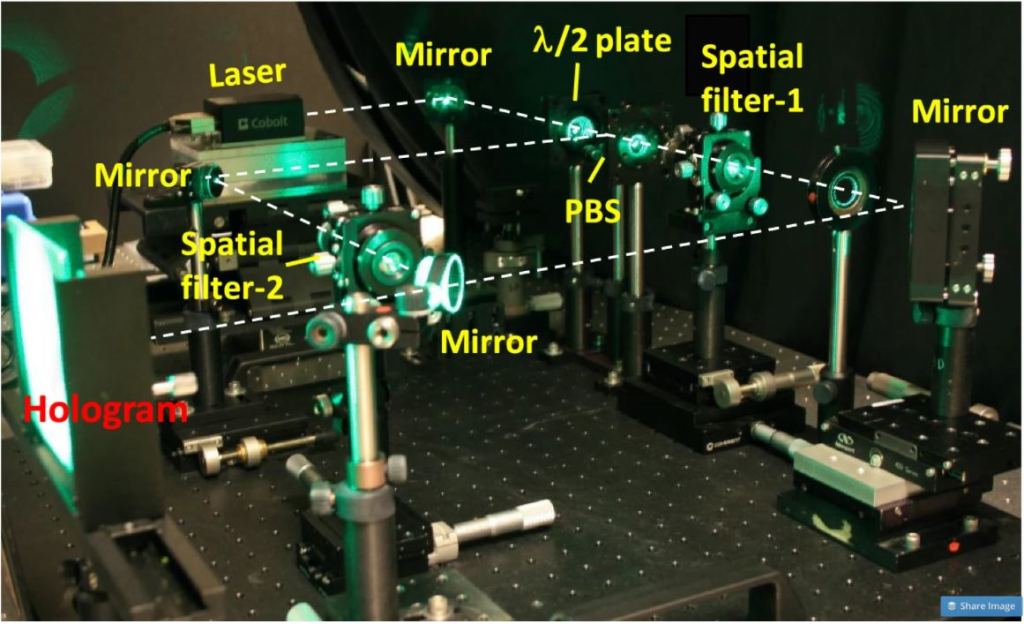Holograms are useful for more than interesting-looking baubles in gift shops. Materials scientists have used them for applications from stress/strain gauges to data storage systems. It turns out they would also be useful in making extraordinarily lightweight, flexible mirrors for space telescopes. A new study led by researchers at the Rensselear Polytechnic Institue shows how that might happen.
The study, published in Nature Scientific Reports, details a technique to create a rollable lens using a holographic coating. Rollable lenses on telescopes have long been sought after, as they allow a much larger lens, potentially many meters across, to fit into a fairing that could traditionally house a much smaller, inflexible, solid glass mirror.
Credit – IEEE Spectrum YouTube Channel
Rollable material has been around for a long time, so having a substrate that can roll up to fit in a fairing is not a new idea. Solar panels have been designed to unfurl for decades, though sometimes even that doesn’t work. However, solar panels don’t have to be as efficient at focusing starlight as a telescope mirror would be. That’s where the holograms come in.
Researchers at RPI developed a holographic coating that can be placed on a flexible substrate that can either “separate light with super sensitivity or focus light with high resolution,” according to author Mei-Li Hsieh. Those two features would make it particularly useful as a key instrument on a telescope.
Credit – St. Augustine Lighthouse YouTube Channel
Together, the coating and substrate create a system similar to a Fresnel lens. These long-standing workhorses of the optics industry have a large aperture while having a short focal length but are significantly less bulky than standard lenses with the same specifications. Figuring out how to lay out a coating that would effectively create such a lens took a lot of mathematical work, but Dr. Hsieh and her team seems to have solved it. Once the mathematics were worked out, the group moved on to building a system.
Using two very close light sources, the team created light beams that imprinted the holographic film covering the substrate. Overlaying convergence and interference patterns over top of one another can create a film that has either high resolution or is broken into its constituent spectra.

Credit – Hsieh et al.
So far, the team has only tested this lens creation technique as an experiment – it still has a long way to go before it is ready to launch on a satellite and start collecting starlight. However, with some more development work, this type of rollable, lightweight lens could prove a breakthrough technology for large-scale space telescopes in the future.
Learn More:
RPI – Need for Larger Space Telescope Inspires Lightweight Flexible Holographic Lens
Nature Scientific Reports – Experimental realization of a Fresnel hologram as a super spectral resolution optical element
Photonics.com – Holographic Space Telescope Takes Aim at the Next ‘Planet Earth’
AZO Optics – New Method Produces Lens for Focused Image or Spectrum
Lead Image:
Holographic lens showcasing a full light spectra
Credit – RPI


A fresnel zone plate combined with a H-A narrow band filter can be a gigantic super light space telescope and produce extreme resolution images of bright objects. It won’t be a light gathering champion, but thats not the point.
Betelgeuse, Canturi triplets and more, we want to see your details!